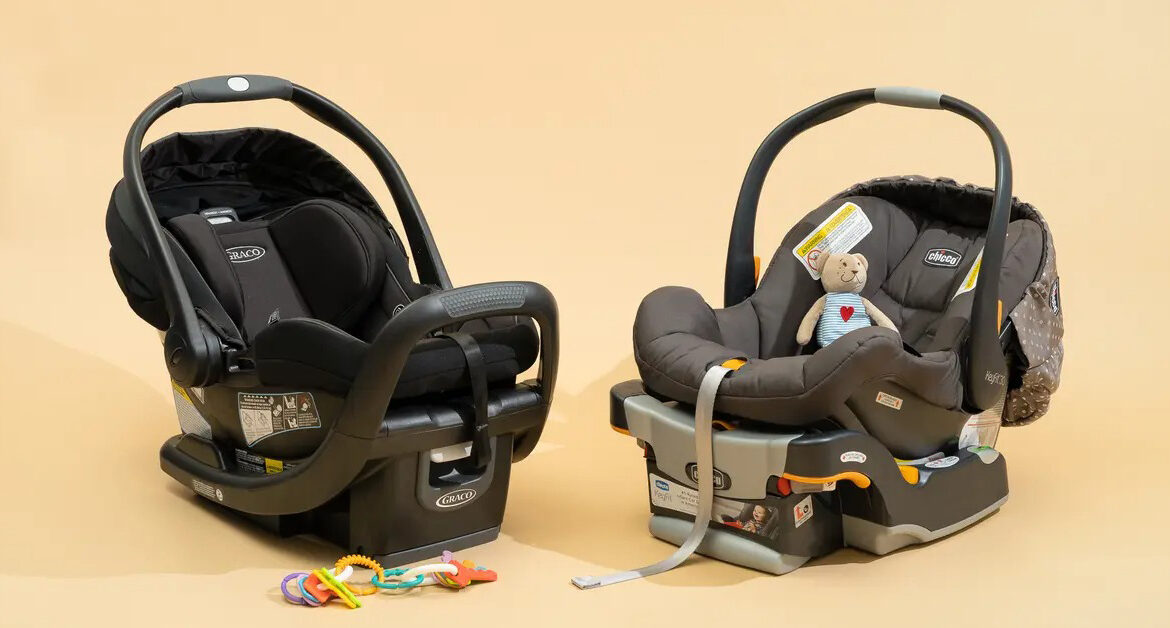
Infant Car Seat Guide: 10 Things You Need to Know!
Are you about to pop and still don’t have an infant car seat to bring your baby from the hospital to your home safely? I know how nerve-racking it is to approach your delivery date without being 100% ready, and it often results in non-ideal purchasing decisions. Believe me, I have tons of useless baby items to account for that fact!
However, the infant car seat is one of the most important items you’ll buy, and there are a few things you need to know before purchasing it. To help a mother in need, I’ve listed them all in this comprehensive infant car seat guide, so let’s dive in!
10 Things You Need to Know Before Buying an Infant Car Seat
Choosing the perfect infant car seat for your baby isn’t easy, and there are many factors you should consider. Here’s a roundup of the most important ones!
1. Safety Standards
The first thing you should check when buying an infant car seat is whether it meets high safety standards or not. I didn’t know this at first, but every country has federal standards for motor vehicle safety, and they include the use of car seats.
In the US, you’ll find an organization called the National Highway Traffic Safety Administration (NHTSA). If the seat you’re buying has a label that states it meets the NHTSA’s standards, then you’re good to go, as the organization crash tests every single car seat before it goes on the market.
Personally, I took the American Academy of Pediatrics (AAP) as a reference. While it doesn’t set safety standards for manufacturers, it provides recommendations for parents on the proper and safe position of the infant seat in the car.
For instance, it recommends that infants ride in rear-facing seats, not front-facing ones, for as long as parents can manage, along with many other helpful recommendations.
2. Compatibility With Your Stroller
One of the decisions that made my life easier was getting a car seat that was compatible with my stroller. Babies sleep in their car seats a lot, and carrying a sleeping baby from the car to the stroller is more dangerous than poking a sleeping bear. But if your car seat can latch to the stroller’s frame, you won’t need to disturb your baby upon arriving at a place.
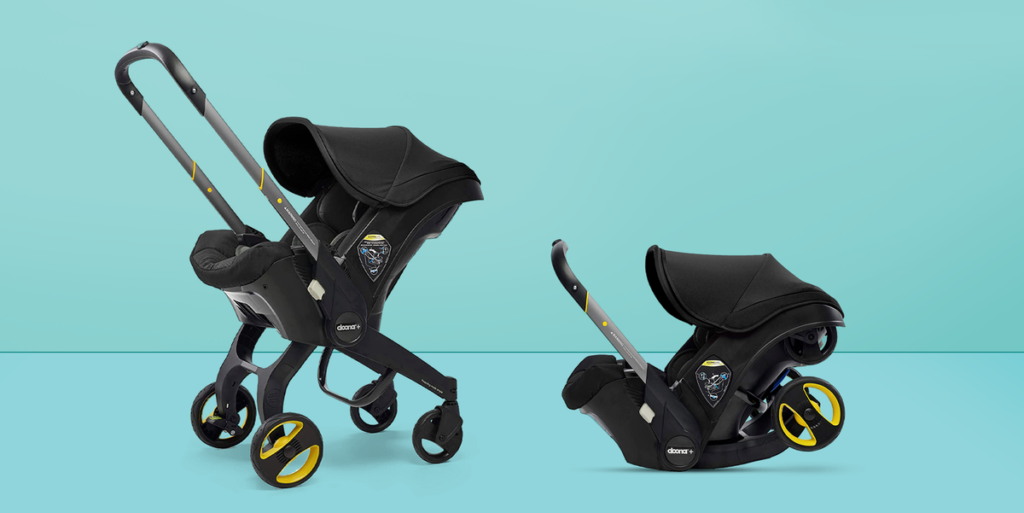
The easiest solution here is getting a stroller and car seat from the same brand, as they’re often compatible. You might also find two sold as a package at a discount price, which is a win-win situation. If you don’t own a stroller yet, you can learn about the different types of strollers here.
If it’s too late and you already have your stroller, see if an external adaptor can make them compatible. Buying the adapter will cost you money, I admit, but there’s no price on moving around without disturbing or waking your baby up!
3. Weight
Parents don’t only use their infant car seats inside the car. Instead, it’s normal to carry the seat around while grocery shopping, visiting a friend, etc. That’s why it’s important to consider the portability of the car seat you’re buying. Is it lightweight enough to carry around?
This point is essential because, as your baby grows, carrying the car seat will become more of a challenge. If it’s already heavy from the beginning, you’re setting yourself up for a lot of arm pain.
4. Seat’s Fit in Your Car
From experience, one of the most important things to check before buying an infant car seat is whether it fits inside your car comfortably. Some seats are too bulky for certain cars and might not fit in the backseat.
Other than the baby seat’s size, you should also check your car’s seat belt and latches. Some baby seats can be fitted inside a car using just the seat belt, while some require LATCH anchors.
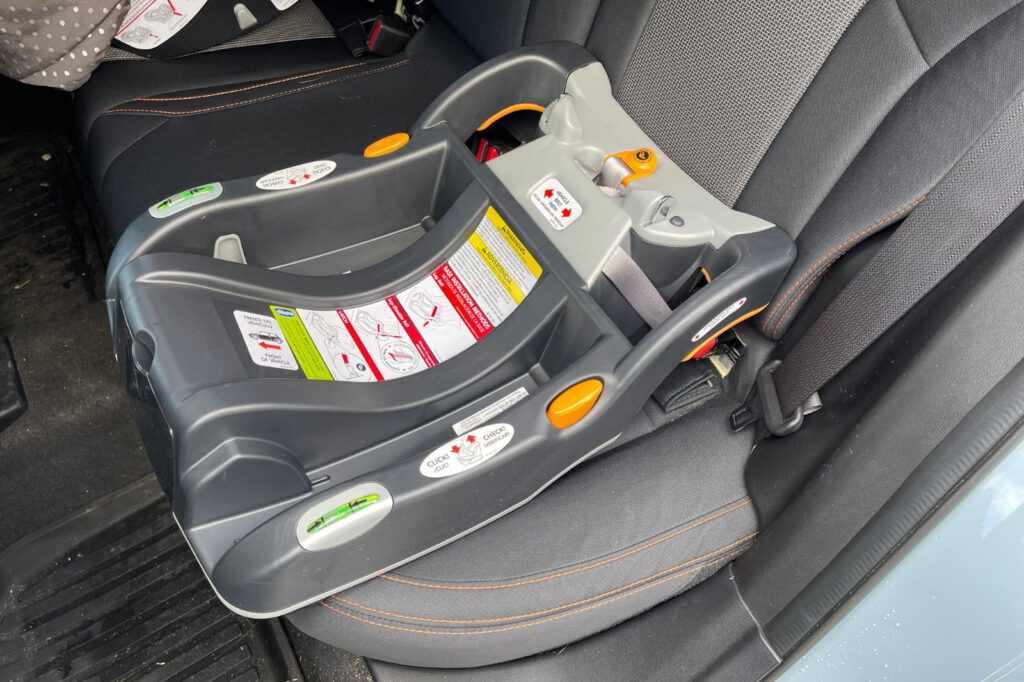
LATCH stands for Lower Anchors and Tethers for Children, and it’s a system that you’ll find commonly in new cars. It consists of latches and tethers between the seat’s bottom and backrest, and they connect to the infant car seat to keep it in place while driving.
Both the seat belt and LATCH system are equally safe, but since one of them isn’t present in all cars, it’s best to check this point before buying a car seat for your baby.
5. Safety of Hand-Me-Downs
I know how preparing for birth can be expensive, and you might be looking for any way to save extra money. However, as a piece of advice, never save money by getting a hand-me-down car seat. You’ll never know how many bumps the seat got and whether it was recalled by the manufacturer or not.
On top of that, it might have missing pieces, and you won’t know if you haven’t owned a car seat before. If you absolutely have to get a used one, take it from a close friend or family member so that you know all of its history and manufacturing details.
6. Comfort
Uncomfortable infant car seats are a perfect recipe for tantrums, which isn’t ideal if you’re driving. That’s why comfort is another essential feature to consider when shopping for a car seat.
Ideally, the seat you get should have a padded backrest and sides to ensure your baby doesn’t sleep on a rough surface. The padding also makes for more safety, as it protects your baby’s head from all the expected ride bumps.
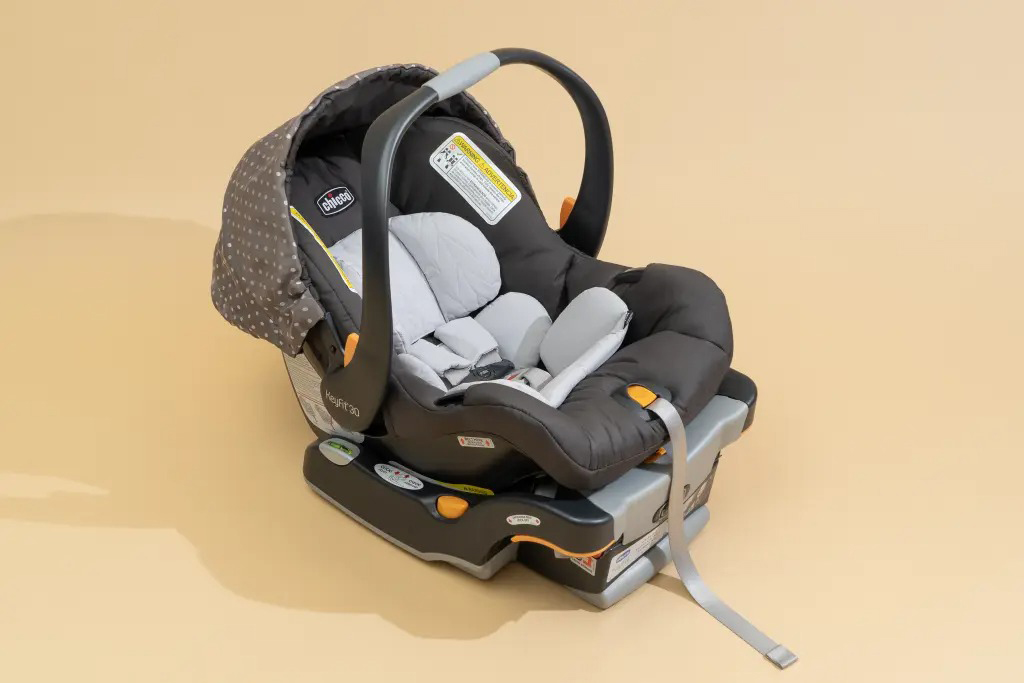
More than that, the seat should be made from breathable and light fabrics so that your kid doesn’t feel stuffy inside during the hot months.
7. Easy Installation
After going through the ordeal of choosing a suitable infant car seat, you’ll have another obstacle to overcome, which is installing it in your car properly. I know it’s not rocket science, but doing it right is mandatory for the safety of your child.
Before buying the seat, make sure it has an easy installation method and comes with an easy-to-read guide or explanatory Youtube videos by the manufacturers.
8. Price
There’s a famous misconception that the more expensive your infant car seat is, the safer it is for your child. However, let me correct it and tell you that all car seats on the market are equally safe because they’re all approved by federal organizations. For that reason, you shouldn’t exceed your budget by a lot.
The reason there are seats more expensive than others boils down to the manufacturing materials, brand, accessories, and more. So if you need to get a budget-friendly seat, don’t worry about your baby’s safety.
9. Safety Harness
Some infant car seats come with 5-point harnesses that include two straps around your baby’s waist, two around their shoulders, and one between their legs. This type is the safest of all car seats, and it’s the ideal choice for babies who move a lot because it’s impossible to wriggle out of.
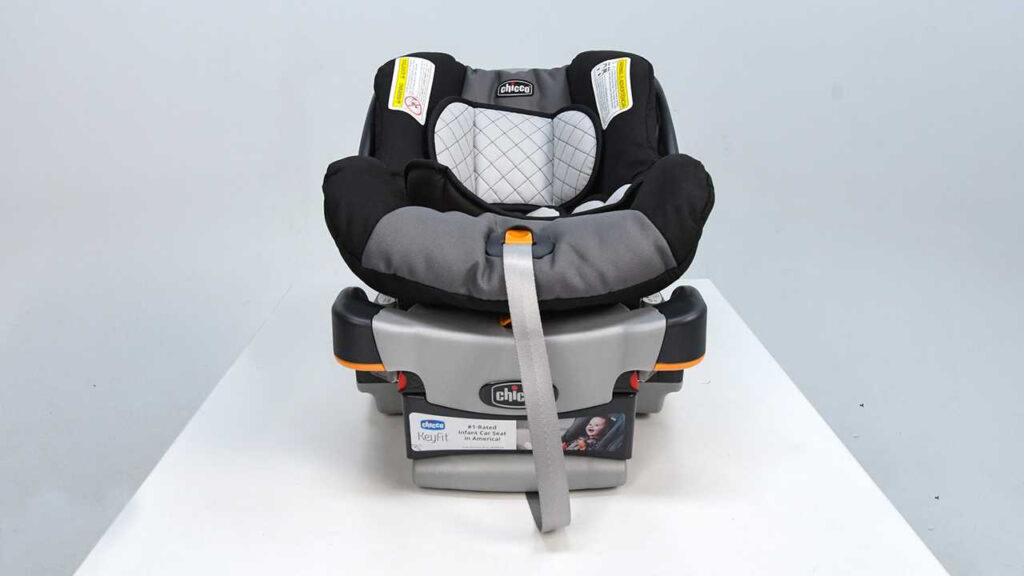
Meanwhile, some seats only come with 3-point harnesses, and some come without harnesses at all, with the option to add detachable ones. In my opinion, you shouldn’t opt for these unless absolutely necessary. If your child moves a lot, they can wriggle out of the 3-point harness once they’re old enough, which isn’t safe.
10. Normal or Convertible?
Convertible seats are different from normal infant car seats because they can be placed facing the rear or front. You usually use them facing the rear till your child is old enough to face the front, and then you reverse them.
You usually use them facing the rear till your child is old enough to face the front, and then you reverse them, which often happens around 2 years old. If you want to learn more about safe seating arrangements, check out my guide on when to turn your baby’s car seat facing forward!
Money-wise, they’re more cost-efficient than normal infant seats because they last with you much longer, and you only need to replace them once your child is ready for a booster seat.
However, from a practical point of view, convertible seats lose the argument because they aren’t portable. Imagine having to carry your child out of the seat every time you leave the car to put them in the stroller. It’s simply too much of a sacrifice for me.
Common Questions Mothers Ask!
When Can My Baby Start and Stop Using the Infant Car Seat?
You can put your baby in the infant car seat as early as the day of birth, but after checking that it’s properly installed. Then, you should stop using it after your child passes the maximum weight or height recommended by the seat manufacturers. They’re usually written on the labels.
What Is the Safest Seat in the Car for an Infant Car Seat?
The safest seat in the car is the middle back seat because it’s away from any impact points. In the case of an accident, the passenger sitting there is the least likely to suffer an injury. You can learn more about this in my detailed article about what side of the car you should put your infant car seat.
Can My Baby Sleep in the Infant Car Seat?
Yes, they can, but not for long. Ideally, your baby shouldn’t sleep more than 2 hours in the infant car seat because the sleeping position can put a strain on their developing spines.
To Wrap Up
Shopping for the perfect infant car seat can be hectic, with the wide availability of products on the market. To help you, I’ve summarized the process in a list of features that you should consider before purchasing.
First, you should check the seat’s safety, compatibility with your stroller, weight, harness system, and fit in your car. Also, you should look for comfortable models with easy installation methods. Along the way, avoid using hand-me-downs because they aren’t always safe, and that’s all!